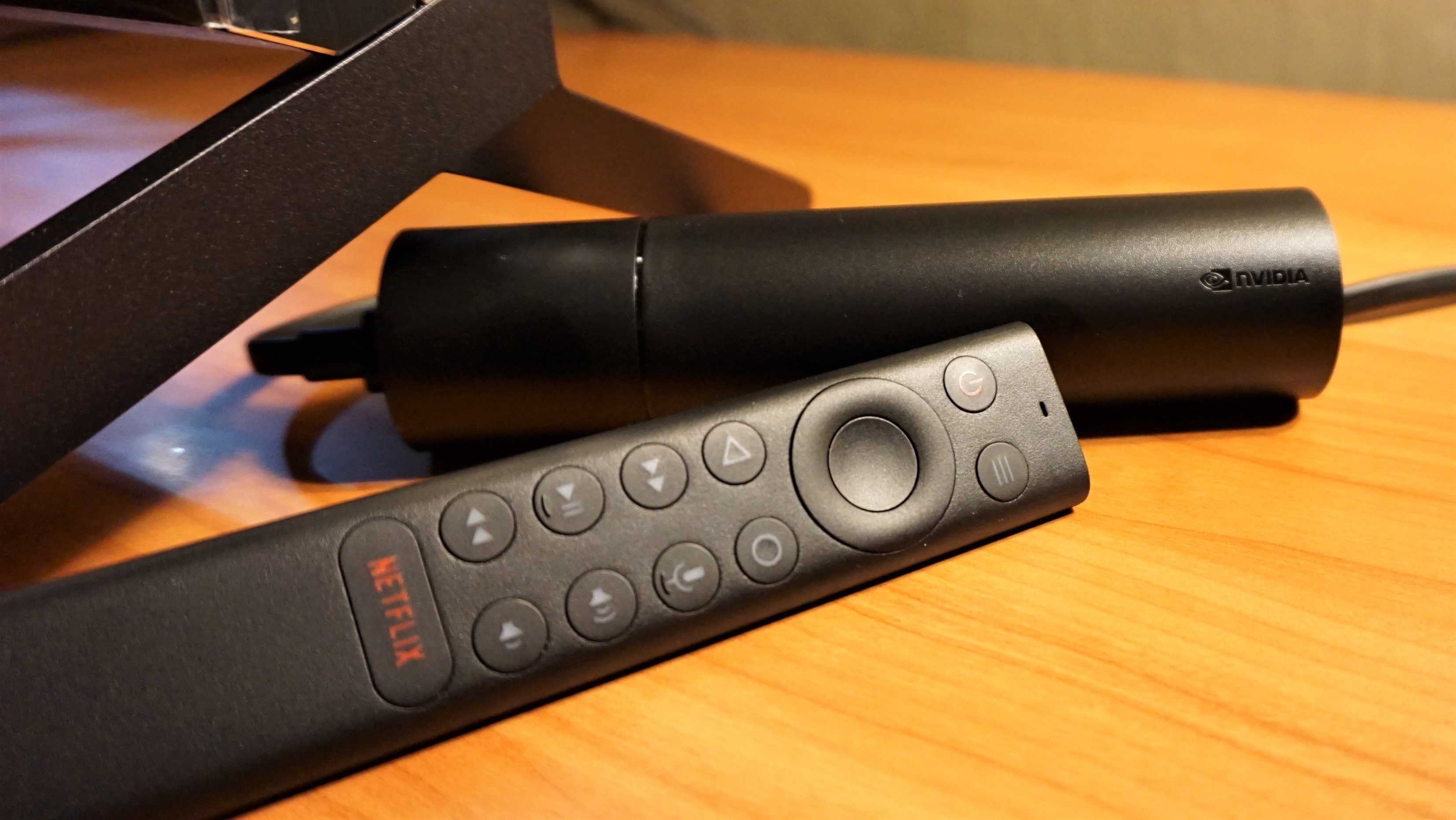TechRadar Verdict
At three times the cost of entry-level 4K HDR streaming players, the Nvidia Shield (2019) isn’t cheap, but it’s an incredibly powerful streaming player thanks to its cutting-edge AI upscaling tech and its support for both HDR10 and Dolby Vision content. Its Android TV operating system may be divisive, and its lack of a bundled controller is disappointing, but the Shield's visual performance is second-to-none in the streaming player category.
Pros
- +
Premium 4K/HDR streaming
- +
AI Upscaling
- +
Google Assistant built-in
- +
Nvidia Geforce Now
Cons
- -
Pricey for a 4K streamer
- -
Doesn’t come with controller
- -
No Apple TV app
- -
No USB ports for extra storage
Why you can trust TechRadar
Two minute review
The Nvidia Shield TV that launched in 2019 may not be the newest streaming player out there, but it doesn't need to be. By pursuing excellence rather than affordability, Nvidia's Shield TV is as good now as it was at launch, and it pretty unmatched in the streaming market – despite high-roads made by some rivals to offer once-premium features (like Dolby Vision) on ever-cheaper streaming sticks.
Encased in a cylindrical black chassis, the Nvidia Shield (2019) doesn’t look like any streaming video player you’ve ever seen before – and it doesn’t perform like one, either. It’s the first of its kind to offer AI upscaling, a technology we’ve primarily seen in high-end smart TVs from Samsung, Sony and LG, but now comes in a player at an incredibly reasonable price point – while this month's Black Friday deals could see that drop even lower.
That said, at $149 (£129, AU$249), it’s about three times the cost of entry-level 4K streaming players like the Amazon Fire TV Stick 4K or Roku Streaming Stick+, but for your money, you’re getting a crazy powerful 4K HDR streaming video player with AI upscaling, support for both HDR10 and Dolby Vision content as well as Dolby Atmos audio.
You’ll also get the redesigned Shield remote that has been revamped to be more user-friendly and the latest version of Android TV (since the 2017 model), which serves as a gateway to Nvidia’s game-streaming service, Geforce Now.
That said, you don’t get an HDMI cable to connect your new player to the TV inside the box nor does the latest version of the Nvidia Shield come with an Nvidia game controller, unlike the prior Gaming Edition of the device.
But, in spite of some minor issues – and two whole years passing since its launch in 2019 – the Nvidia Shield is one of the best streaming players on the market. Just make sure you keep an eyes on the step-up Nvidia Shield TV Pro for some extra RAM, or our guide to the best Black Friday TV deals this year to see what screen to pair your high-powered streaming device with.
Price and availability
The new Nvidia Shield comes in two configurations, the widely available cylindrical Nvidia Shield (reviewed here) and the Nvidia Shield Pro that has 1GB of added RAM and a larger hard drive.
The former is available for $149 (£129), while the latter comes in at $199 (£179). It’s worth noting that neither of the two configurations include the Nvidia Shield Controller, however both units are compatible with both the DualShock4 and Xbox One controller – as well as the newer PS5 DualSense and Xbox Series X controllers.
Now, obviously, that price tag is quite a bit higher than the entry-level 4K video streaming players out there like the Roku Streaming Stick+ and Amazon Fire TV Stick 4K, both of which are available for a third of the price at $49.99 (£49).
There is a substantial difference in performance and feature set for the price differential, but the new Shield is definitely not the player for people looking for 4K streaming on the cheap.
Design
While the Nvidia Shields of years past looked like a proper micro console, the 2019 iteration of the Shield looks more like a sideways Amazon Echo than it does a streaming video player. The reason for this, according to Nvidia, is to allow you to tuck it into the back of your entertainment center – away from your TV – which they say cause signal interference.
Admittedly, we didn’t notice a massive difference in wireless performance from the Nvidia Shield and a more traditional player like the Amazon Fire TV Cube that sits right next to the TV, but the cylindrical design is aesthetically unique if nothing else.
Also unique is that the inputs and outputs of the player are located at each end - on one side is the power and ethernet connectors, while on the other you’ll find HDMI-out and reset button. These connectors are all tucked inside a cutaway cove in the player itself, which helps protect the ends from damage in case something falls behind your media center.
Why does it have ethernet? Although the box is compatible with 802.11ac Wi-Fi your best bet for consistent 4K video streaming or GeForce Now gaming is going to be running an ethernet cable directly from your router into the box. (We were able to get 4K streaming over Wi-Fi, but the ethernet port is a great solution for folks with a less reliable network.)
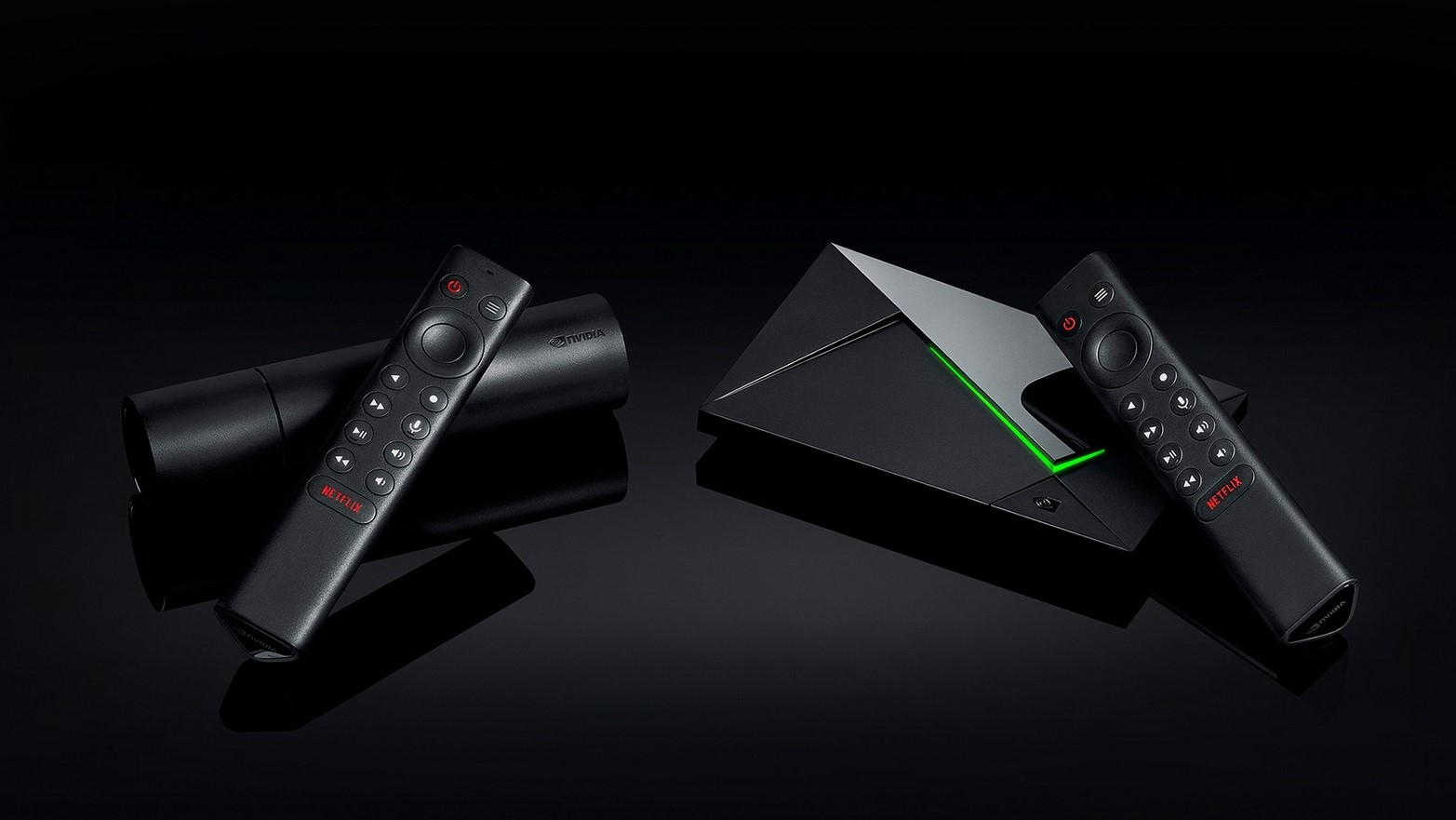
Inside the device you’ll find the newly upgraded Tegra X1+ processor, which is vital to the AI upscaling process that we mentioned earlier, plus 2GB of RAM and 8GB of storage. Stepping up to the Shield Pro gets you an extra 1GB of RAM and 8GB more storage, plus two USB ports and support for a PLEX media server, Samsung SmartThings and Twitch broadcasting from the console.
As you can imagine, a decent processor like the Tegra X1+ makes the Nvidia Shield a top-of-the-lin streaming player – and a fairly competitive micro-console as well - but we’ll cover that in more detail below.
The last piece of the design worth covering is the new triangular (pyramidical?) remote that has backlit buttons and a built-in remote finder feature. As you’d expect, the remote itself is plastic but it has a good feel in the hand. On it you’ll find all the basic playback control functions plus the two Android TV buttons (Home and Back) as well as a dedicated Netflix button. Like last year’s pack-in remote, the new Shield remote has a built-in microphone that you can use to ask Google Assistant for assistance, and a neat surprise in the form of HDMI CEC support to control your TV’s volume through the volume buttons on the remote.
The only problem with the remote? It uses two AAA disposable batteries rather than a rechargeable Lithium Ion battery. It’s not a deal-breaker, but it does mean that you’ll have to periodically replace the remote when it runs out of juice.
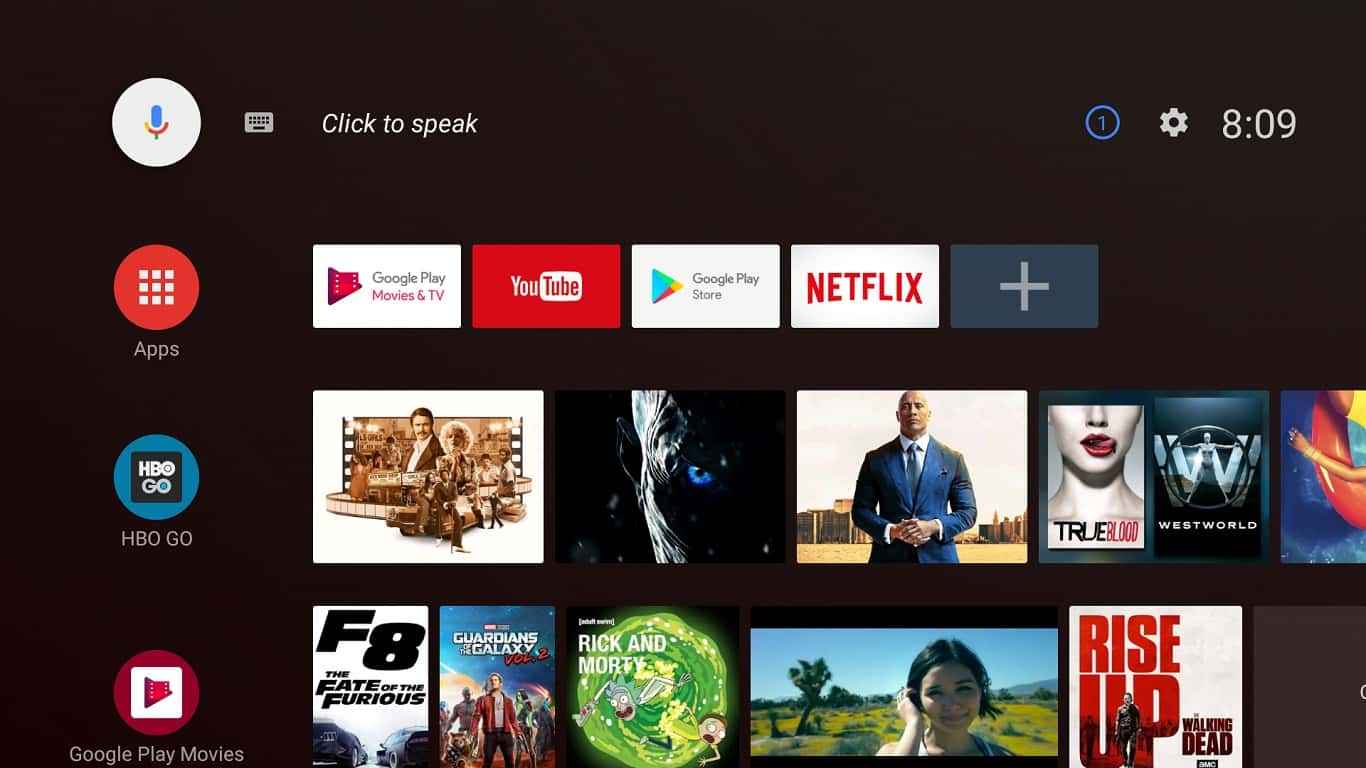
Features and Android TV
Go through the quick and painless setup process and you’ll be greeted by the latest version of Android TV, Google’s smart TV platform that uses rows and blocks to show you content. (No Google TV on the Shield devices yet.)
Compared to Roku’s barebones interface and Amazon Fire TV’s Amazon-heavy UI, Android TV tries to show you a buffet of content from different sources: the top row is your most regularly-used apps, with several rows underneath that follow content recommendation snippets for each of the main services.
Speaking of services, most of the main players are all here including Netflix, Amazon Prime, YouTube, Vudu, HBO, Twitch, Hulu, Sling TV, Crackle, EPIX and many, many more. A select few of these (Netflix and Vudu) offer Dolby Vision right out of the box, but one app you won't find here is Apple TV, which has recently released on a number of other platforms including Fire TV and Roku.
In addition to on-board services, the Shield also has Chromecast Built-in, allowing you to cast content from your smartphone, tablet or PC to the player. This feature is particularly great if you have friends over who all want to share videos on the TV, and it’s handy should you ever find that your phone is closer than your remote and you don’t want to get up.
But the real reason you’d want to pick up the Nvidia Shield over, say, a Roku Ultra or Amazon Fire TV Cube is because the Shield can vacillate between a streaming media player and a micro game console capable of playing Android TV games found on the Google Play Store, streaming games from Nvidia’s own Geforce Now service or, if you’re feeling more adventurous, sideload emulators for some of your favorite retro game consoles.
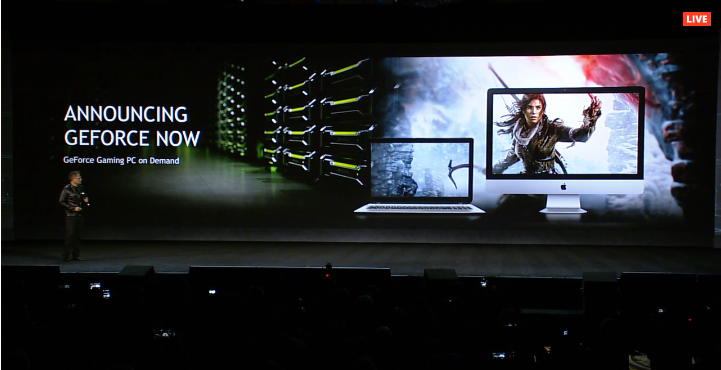
Android TV games that you can download are generally a few years older (see: the Tomb Raider reboot) or are ports of their mobile counterparts (see: Age of Zombies). Games from GeForce Now are much, much newer but come with the caveat that they’re all streamed from a server that’s probably located pretty far from where you live. Lastly, GameStreaming allows you to take games from your PC and stream them to your Shield. It’s a neat concept and not one you’ll likely ever find on any other streaming video player, although you can achieve similar functionality with the cheaper (though now discontinued) Steam Link.
The Shield’s penchant for gaming is why it’d be nice if Nvidia packed a Shield Controller inside every box but as long as you have a PS4 or Xbox One controller laying around your house you can still partake in the Shield’s gaming features.
Last but not least, the Shield also comes with a nearly full-fledged version of Google Assistant. With Google Assistant you can control your smart home, ask for answers to basic questions and track down your favorite shows and movies via voice search. Admittedly the voice search here isn’t as good as it is on other platforms like Roku, but Assistant is far more helpful when planning your day and controlling your smart home than Roku’s basic assistant. The bad news? Because the basic version of the Shield no longer has USB ports, you can’t plug in a Samsung SmartThings dongle and tap into that ecosystem anymore.
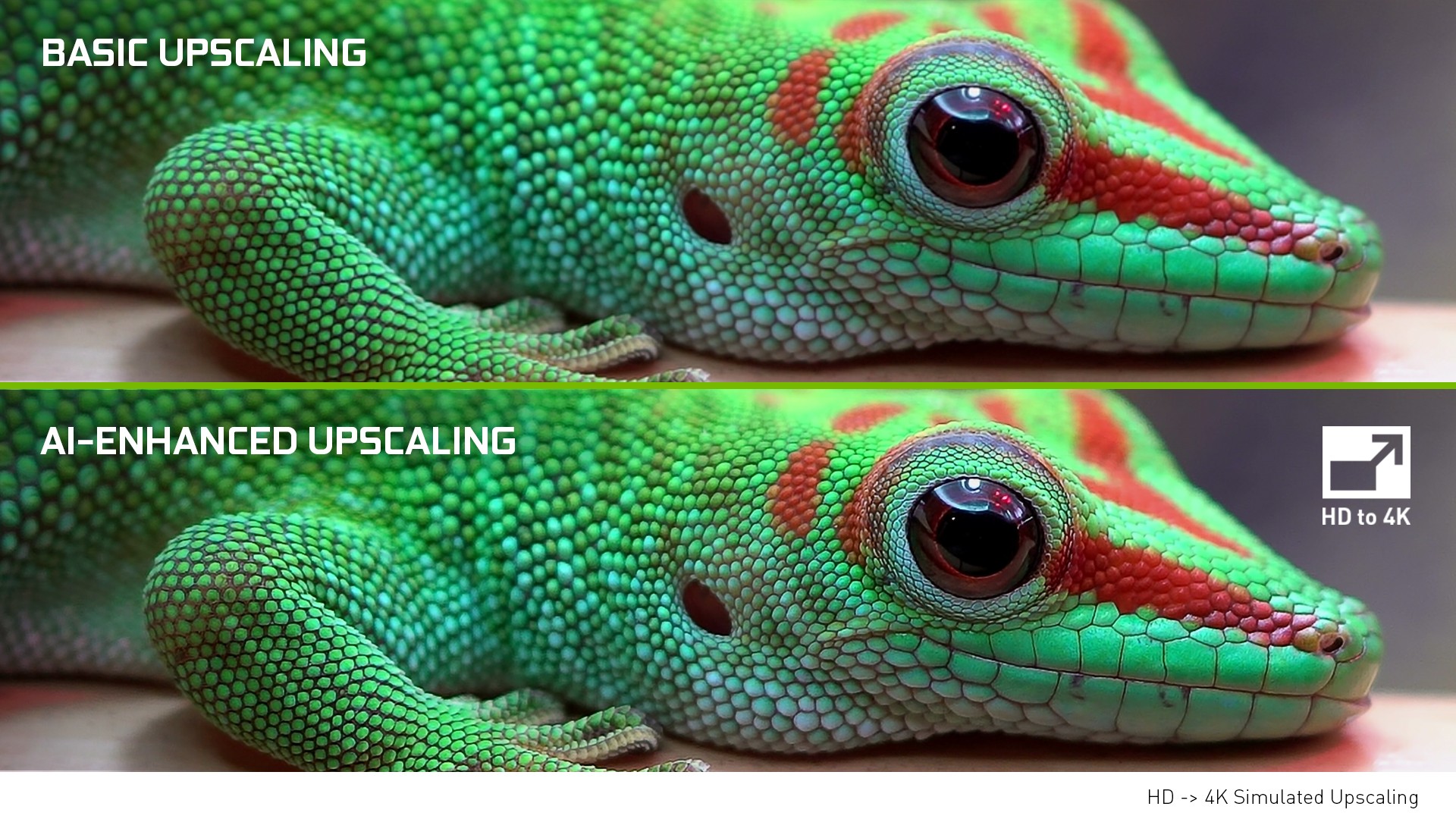
Performance
Of course, what really matters most is how it makes content look - and thankfully it leaves very little to be desired here.
In our time with the new Shield we watched a multitude of content, everything from run-of-the-mill videos on YouTube to HD TV shows and some spectacular-looking Dolby Vision content from Netflix, all of which looked dazzling on the TCL 6-Series Quantum that’s currently sitting on our test bench.
Before we dive into each type of content, we should start by talking about Nvidia’s proprietary AI upscaler that is really the difference maker between its visual performance and what you’d find on, say, a Roku Ultra or an Amazon Fire TV Cube. As we said in our Nvidia Shield Pro review, the AI upscaler is powered by an algorithm determined by a neural network that has been fed thousands of hours of footage that’s then processed locally and can hugely sharpen content, making it look amazing of your 4K TV.
The upscaler doesn’t work on every video source (nothing below SD like a super old YouTube video, for instance, or anything above 4K30) but it excels at making HD content from the last 20 years look like it was shot earlier this year with a 4K video camera.
One of the best examples of this upscaling making a difference was during Superbad, streamed on Netflix in HD. With the upscaler on, you could see the light reflecting off the actors’ eyes, make out the images on their shirts and could clearly see tiny details like the nutrition label on a pack of chips Michael Cera and Jonah Hill’s characters had during lunch.
For some, this level of detail is unnecessary - who cares what characters in a decade-old film wore? - but for others, this is exactly the kind of clarity worth paying for.
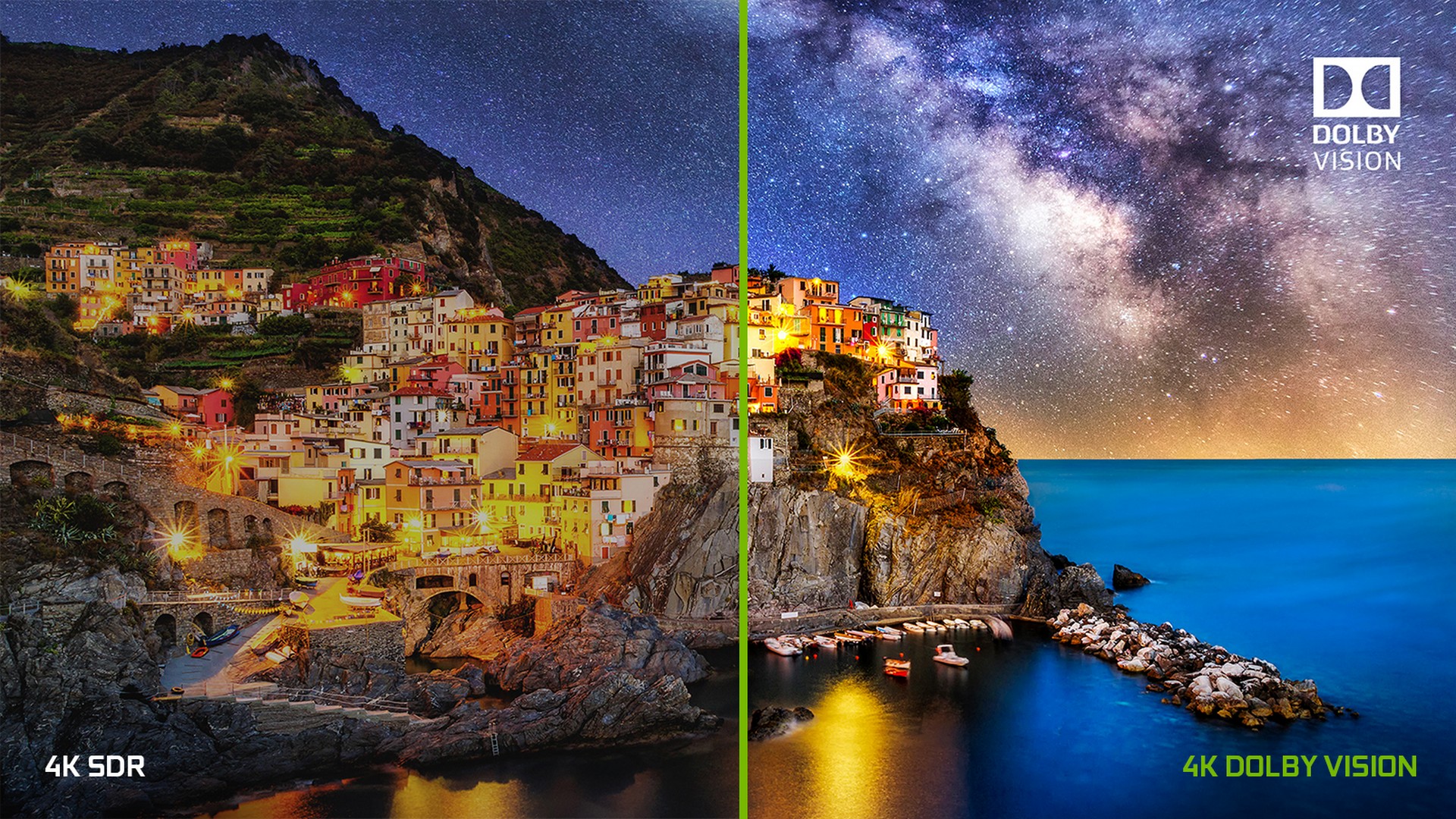
The flip side of this is that, because the Nvidia Shield supports the highest-end HDR format around at the moment, some content doesn’t even need upscaling. Such was the case for Our Planet on Netflix which we were able to watch in jaw-dropping Dolby Vision. Watching Our Planet on the Shield was a visual treat with beautifully saturated vistas of the Sahara and Borneo, and inky blacks of the ocean depths and night sky. If you have a TV that supports it, it's worth seeing for yourself.
When it was time to jump from one scene to the next, the Shield was able to buffer the new content quickly and had almost no problems with pop-in on the home interface. (Though, if it will remain that way down the road after Google’s next update remains to be seen.)
In fact the only real issue with the TV’s performance is that Android TV can be a bit buggy. Previous versions of the software before the latest release were known for crashing, and while Google has done a good job fixing that on the latest version, we’re always skeptical of bugs and system crashing errors returning with a vengeance.
Who’s it for?
Premium Cord-Cutters and Streamers: The new Nvidia Shield is a premium 4K HDR/Dolby Vision streaming player. It’s not the cheapest gateway into 4K streaming, but it is one of the most powerful. If you’re looking to dabble in high-end formats, this is the player to get.
Discerning Cinephiles: Because AI upscaling really focuses on the small details in a scene (the lettering on a bag of chips, the wrinkles in someone’s face, etc…) relatively observant cinephiles will get the maximum enjoyment from the upscaling features of the new Shield.
Who’s it not for?
Budget Cord-Cutters: The Shield is powerful and fast, absolutely, but no one will claim it’s the cheapest 4K HDR streaming player on the market. It’s not even the cheapest 4K HDR player to offer Dolby Vision. So, that said, you can save a fair amount of money if you don’t mind skipping out on some features. We wouldn’t recommend it, but entertainment budgets are tight and the Shield’s upscaling tech is more of a nicety than a necessity.
HDTV Owners: We’d make the same argument for HDTV owners looking to buy a new streaming player – the Shield is probably more power than you’re going to need. You can save yourself a heap of money by going for something like the Roku Express instead.
- Need something cheaper? Check out the best streaming devices for every budget
Nick Pino is Managing Editor, TV and AV for TechRadar's sister site, Tom's Guide. Previously, he was the Senior Editor of Home Entertainment at TechRadar, covering TVs, headphones, speakers, video games, VR and streaming devices. He's also written for GamesRadar+, Official Xbox Magazine, PC Gamer and other outlets over the last decade, and he has a degree in computer science he's not using if anyone wants it.
